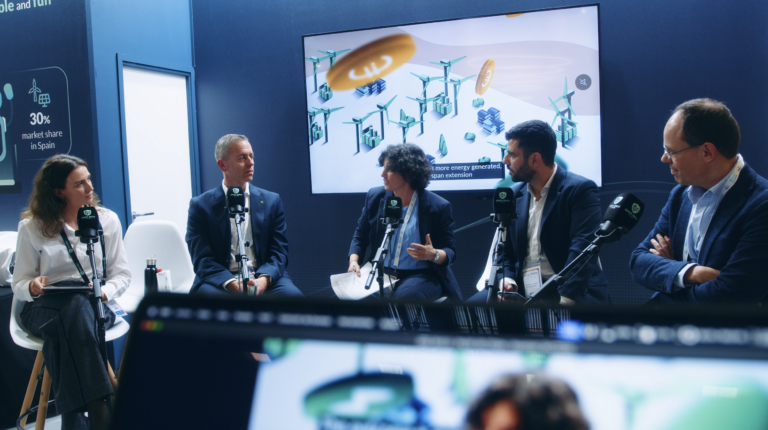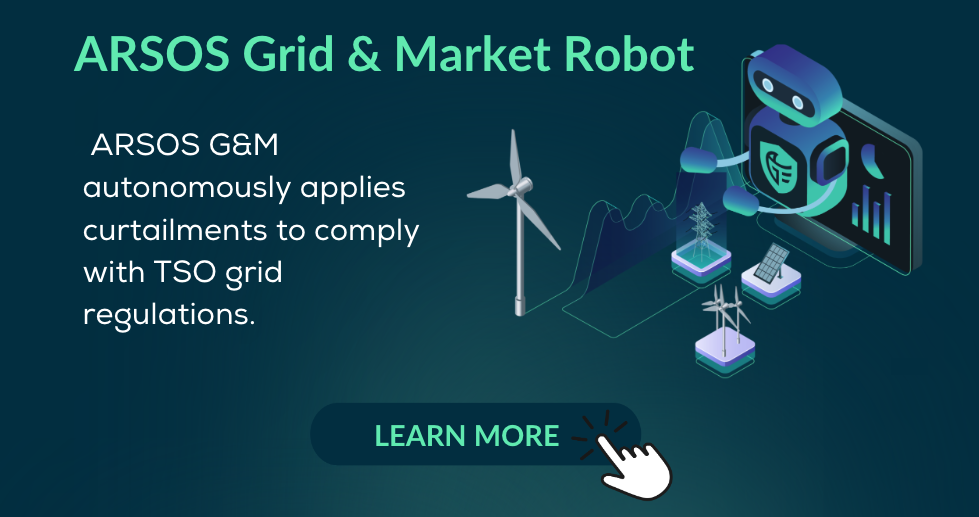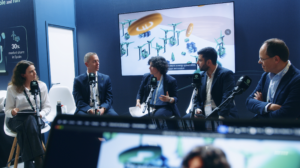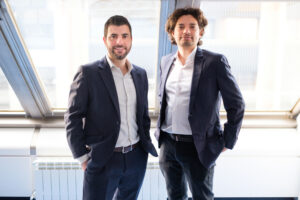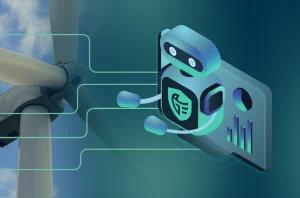As renewable energy continues to grow, it brings infinite benefits towards a greener future, but it also comes with its challenges, one of these being curtailments. From what we’ve seen, curtailments aren’t going away anytime soon and so it’s time we embrace this challenge ensure we manage and leverage it effectively. That’s why we decided to host a panel discussion on this very topic at the recent Wind Europe 2024 event in Bilbao. We brought together industry leaders representing different stakeholders from Gnera, Baywa.re and Verbund Green Power Iberia to explore how collaboration and innovation can turn curtailments into opportunities. In this article, we delve into the insights from the discussion, examining how different stakeholders are uniquely impacted and highlighting collaborative strategies to address curtailments effectively.
“In the last two months, Green Eagle Solutions has executed over 72,000 curtailments. What’s most most concerning is that it looks like this is only going to grow. It looks like curtailments are here to stay and that we need to write a strategy to tackle them”.
Alejandro Cabrera, Co-Founder & CEO, Green Eagle Solutions.
What are curtailments?
Renewable energy curtailments generally occur when the generation of renewable energy exceeds the demand for electricity or the capacity of the grid to absorb that energy, leading to a situation where renewable energy sources like wind or solar farms are temporarily shut down or their output is reduced. Curtailments are implemented due to many reasons such as grid capacity and stability, a mismatch between supply and demand or a lack of storage.
Curtailments pose a significant challenge for the renewable energy sector and affect all stakeholders involved from Traders, Operational & Maintenance suppliers, to Independent Power Producers and Asset Managers. Not only does it mean clean, zero-emission electricity is not being used to its full potential, but can result in energy reductions of up to 20%, revenue losses, operational inefficiencies and maintenance challenges.
We asked leaders from Gnera, BayWa.re and Verbund Green Power Iberia to share how they are impacted by Curtailments.
How do curtailments affect the different players in the industry?
Traders
For traders like Gnera, curtailments necessitate innovative market strategies to mitigate losses due to underproduction and low spot prices. The primary focus is on beating the day-ahead market prices, emphasising the importance of adapting to changing conditions where previously sufficient day-ahead prices are no longer guaranteed. Traders advocate for collaboration with power plants and operational services to manage new market challenges effectively, suggesting that more input and strategic cooperation are crucial for navigating these changes.
Operation & Maintenance Suppliers
Companies such as BayWa.re face operational challenges in adjusting maintenance schedules and resource allocation in real-time, which can significantly disrupt cost control and service quality. Operators are concerned with the implications of curtailments on the physical components of power generation assets, particularly the wear and tear on wind turbines and the need for IT investments to enhance plant controllability and market responsiveness. Open communication and strategic decision-making are crucial for balancing short-term revenue opportunities with long-term asset health.
Independent Power Producers (IPPs)
IPPs like Verbund Green Power Iberia experience direct financial impacts, with facilities often producing less energy than anticipated. This underproduction affects revenue and complicates asset management, especially under contractual constraints like Power Purchase Agreements (PPAs). IPPs emphasise the need for predictive maintenance and strategic scheduling to mitigate the effects of curtailments and enhance market participation.
“We have a portfolio of around 700 megawatts across Spain. One of them has produced 6% less than expected due to curtailments and the other one has produced 10% less than expected”.
Jose Benito, COO, Verbund Green Power Iberia
Collaborative Strategies for Managing Curtailments
Shared Data and Real-Time Analytics
A central theme from the panel was the role of real-time data sharing and analytics in managing curtailments. By leveraging automation and sophisticated software, stakeholders can better predict and respond to fluctuations in energy production and demand.
Technological Integration and Flexibility
Integration of advanced technologies enhances the controllability of energy assets, allowing for more granular management and mitigation of curtailments. Flexible operational strategies ensure quick adaptation to changing conditions without compromising service quality or asset longevity.
Market Adaptation and Strategic Scheduling
Understanding and adapting to market dynamics is crucial. Deployment of cutting-edge market management software helps optimise operations amidst curtailments. Predictive maintenance and strategic scheduling maximise energy output and minimise downtime.
What solutions are available?
In the context of managing curtailments, the role of technology is pivotal. As industry leaders have highlighted, the integration of sophisticated software and automation aids in both predicting and effectively responding to fluctuations in energy production and demand. Green Eagle Solutions is pioneering the way towards this with the ARSOS Grid & Market Robot, which autonomously aligns with Transmission System Operator (TSO) grid codes and optimises energy market opportunities. By automating the application of curtailments to comply with these codes, ARSOS G&M demonstrates the potential for technology to enhance the management of renewable energy sources.
This seamless integration of technology is key to enabling more granular control over energy assets, allowing stakeholders to quickly adapt to changing conditions without sacrificing service quality or asset longevity.
Enhancing Energy Storage and Demand Management
To counteract the unpredictability of energy supply and demand, enhancing energy storage capacities and refining demand management strategies are pivotal. These measures help stabilise the grid and ensure that excess energy is stored for future use rather than wasted.
The future calls for a unified approach
The collective wisdom at Wind Europe Bilbao underscores that overcoming the challenges of curtailments requires a unified approach. Through collaboration, technological innovation, and strategic foresight, the renewable energy sector can transform curtailments from a stumbling block into a stepping stone towards a more sustainable and efficient future. This proactive stance not only mitigates the immediate impacts of curtailments but also fosters long-term resilience and growth in the renewable energy landscape.
By embracing these strategies, the industry ensures that it is not merely reacting to challenges as they arise but also proactively setting the stage for a more robust and sustainable energy future.
Interested in learning more about how Green Eagle Solutions is accelerating the energy transition through automation?

